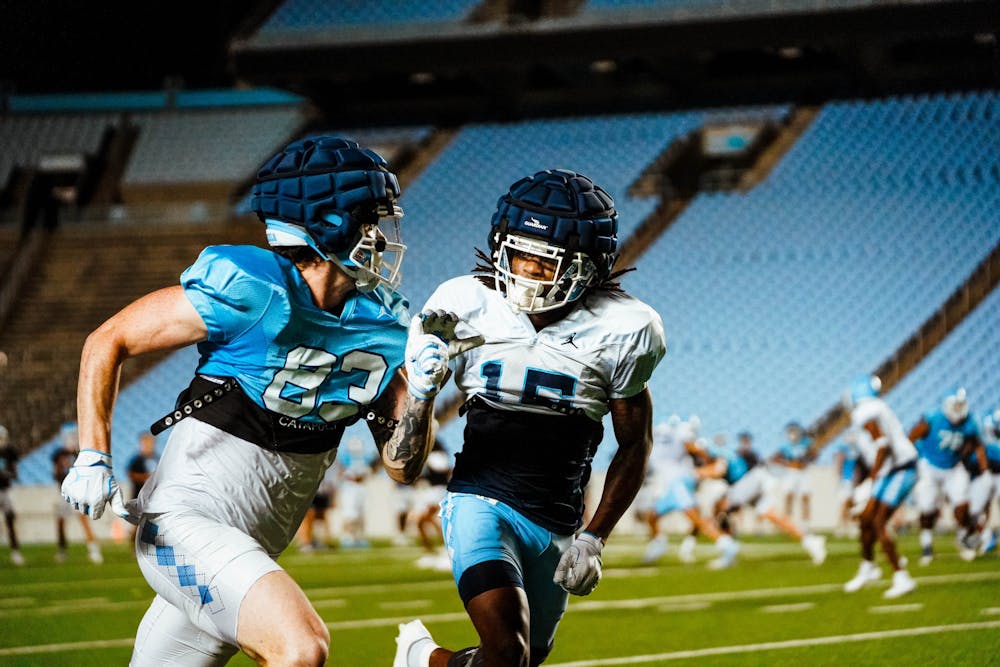As health and public safety continues to be a priority in athletics, UNC is continuously experimenting with new methods to prevent severe head trauma events across all sports. However, with the risk of concussion being the highest in college football, particular attention has been paid to the gridiron.
Among the newest developments in football's concussion safety measures is the Guardian Cap, a soft, padded covering that goes on the outside of the regular helmet.
The Guardian Cap operates like an air bag, absorbing the contact of each hit and serving as a barrier between the player and impact, according to Guardian Sports, the company that produces the caps. The goal of wearing the caps is to reduce the risk of severe brain and spinal cord injuries. They have been featured at NFL training camps throughout the summer, and the North Carolina football team also followed suit.
Despite the advertised benefits, there are also several drawbacks to the new contraption. With their eye-catching appearance and bulky nature, many players elected not to wear them.
“I don’t really want to wear one,” graduate defensive linemen Raymond Vohasek said. “I hear they’re heavy, so I’m just going to stick to what I know.”
However, the discomforting nature of the cap is not the only shortcoming the new safety product faces. Experts believe the Guardian Cap may not even work to prevent concussions.
“I was somewhat surprised when I saw the caps showing up on the market and being promoted in spring ball last year,” Chancellor Kevin Guskiewicz, co-director of the Matthew Gfeller Sport-Related TBI Research Center, said.
Guskiewicz said he believes there will not be a reduction in concussions on the practice field as a result of the Guardian Caps.
“The problem is the brain is always still going to move around inside the skull when the helmet is being worn,” he said. “I’m not convinced that any sort of exterior covering is going to prevent that movement. Research has shown that.”




